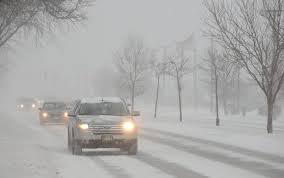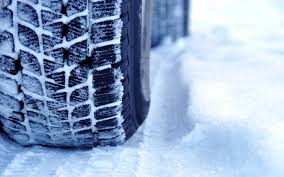General Safety
- Clutter causes tripping hazards.
- Walkways and steps need to be kept clear –also in the winter from snow and ice.
- Railings and banisters for all steps need to be present and secure.
- Use only step stools and ladders that are designed for that purpose.
- Ladders need to be secured either before climbing.
Motor vehicle accidents are the number one injury away from home. When driving:
- Always give yourself plenty of time to get to your destination safely
- Always wear your seat belt
- Use your head lights, especially in inclement weather – this helps other drivers see you so they do not pull out in your lane because they didn’t see you!
Winter driving tips:

#1 Be Prepared. Before going out on the road in hazardous conditions – ensure both you and your vehicle are equipped and prepared for the winter conditions.
#2 Slow Down. Simple enough, but really – leave earlier and give yourself time to deal with the additional hazards of winter road conditions.
#3 Clear snow and ice off ALL windows. Yes it’s a pain, but it’s not going to blow or melt off quickly. Keeping a broom near your parking spot makes the job much more palatable.
#4 Headlights on at all times- BE SEEN.
Your headlights help others see you, so they don’t pull out in front of you.
#5 Adjust your travel time – if you can. Fortunately here in Central Oregon the sun can quickly help our DOT folks can improve road conditions by mid-day. Check ODOTs road condition website and cameras for the latest.
#6 Balance vehicle weight (I.e. a few sand bags). Most vehicles are lighter in the rear, even 4x4s. Balancing weight greatly improves handling and predictability in slick environments.
#7 Have winter survival gear in your car. (I.e. flashlight, cell phone, snow boots, gloves, hat). Be prepared to walk a mile if you need to.
#8 Consider siping your tires. Those extra little edges cut into the tread – really help especially on pack snow and ice – conditions when vehicles most often loose control.
#9 Carry and use tire chains. For traction in extreme conditions and when going over the passes.
#10 Consider snow tires on all four wheels – Help in deeper snow and slush. Put on all four wheels – for balance, steering, and braking. Use tires with studs or the newer studless – based on your own preferences and driving needs.

Life Vest on the water
When out on the water ALWAYS wear a life vest or personal flotation device. Water in the High Cascade region is often colder than one would expect and rivers are swifter – both can easily overcome the best of swimmers.
Helmet when riding
When out on your bike, motorcycle, and ATVs always wear a helmet and highly visible gear. Always use your headlight – so you can be seen.
